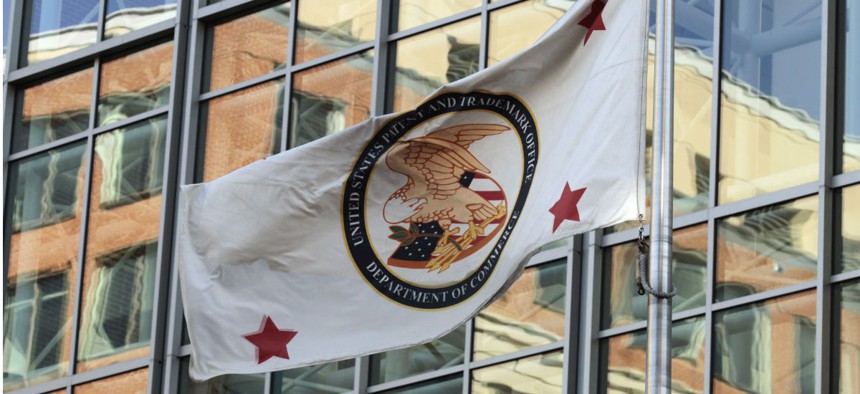
Alex Brandon/AP file photo
The Patent and Trademark Office's Telework Headaches Aren't Over
Extensive digital review finds more than $20 million in potential waste in overtime pay and downtime.
The desire of many high-skilled examiners at the Patent and Trademark Office to work from home has again produced headaches for agency leaders with the release Wednesday of a watchdog report finding continued timecard abuse and lost productivity.
The Commerce Department inspector general’s extensive digital review of the work of 8,400 examiners in two overlapping time periods last year estimated more than $20 million in potential waste in overtime pay and downtime. The more than 288,479 “unsupported hours” found in one 15-month period “could have reduced the patent application backlog by approximately 15,990 cases,” the report estimated.
Describing the auditors’ complicated methodology of combining data from building turnstile records, the agency’s virtual private network connection and computer workstations, the IG said it arrived at a “conservative estimate” of the lost hours-- the actual total could be “twice as high.”
The problem, the report stated, is that “supervisors do not actually know when both teleworking and non-teleworking examiners are working,” which “makes it difficult for supervisors to accurately review and approve timesheets.” In addition, the Patent Office’s production goals are “out of date and do not reflect current efficiencies,” even after a new telecommuting policy was introduced in February 2015.
Wednesday’s report is a follow-up to a narrow report last year that focused on timecard abuse by “Examiner A”—who resigned just as IG staff were preparing for an interview—but whose records continue in the new report as a point of comparison.
Specifically, the IG said, in the nine-month period it studied, it found 137,622 unsupported hours, which it equated to $8.8 million in potential waste. About 28 percent of those mislogged hours were overtime, for a total of $2.1 million. A subgroup of 296 examiners covered in this analysis had 10 percent or more unsupported hours and accounted for 39 percent of the total unsupported hours, but received more than $1.4 million in bonuses.
This subgroup “were not uniformly poor performers,” the IG said. “In fact, the data suggests that only a small number of those examiners had annual performance ratings that were below average.”
Some of the blame for not detecting the abuse is laid at USPTO policies such as not requiring teleworkers to log in to their computers if they don’t telework full-time, the report said. Also, “The USPTO does not require that on-campus examiners use their USPTO-issued ID badges to exit through the access control turnstiles during weekday working hours,” though auditors did not count this absence of a login against the examiners’ productivity.
The IG made six recommendations:
- revaluate production goals to reflect new automation;
- require all examiners to provide supervisors with their work schedules, regardless of performance and ratings;
- reinstate the USPTO requirement that employees use their USPTO-issued ID badges to exit the USPTO facilities through the controlled-access turnstiles during weekday working hours;
- require all teleworkers to remain logged into the USPTO network during their working hours when the network is available to the teleworker;
- review policies, procedures and practices on overtime abuse; and
- consider requiring telecommuters to use small office/home office routers, which, unlike VPNs, allow employees to “operate as if they were in the office even though they are working remotely.”
In response, USPTO Chief Communications Officer Patrick Ross issued a statement on Wednesday promising to use the IG’s work to improve compliance with time and attendance rules.
“It is important to recognize and understand that the OIG report did not focus on individual employees; instead, it was based on a comparative analysis of large computer record data sets,” he said. “The OIG concluded that there was a lack of a digital footprint in approximately 2 percent of the total hours claimed by the patent examiners during the 15 month period – a percentage that continued to shrink following the introduction of new USPTO controls, and during the course of the IG review.
“The USPTO recognizes,” he continued ”that there may be many reasons for the lack of a digital footprint and is committed to analyzing the recommendations offered by the OIG, continuing to conduct our own review, and, if needed, improving the extensive measures already implemented.”
Last June, the Patent Office’s telecommuting program received a clean bill of health in a review conducted by the National Academy of Public Administration.







